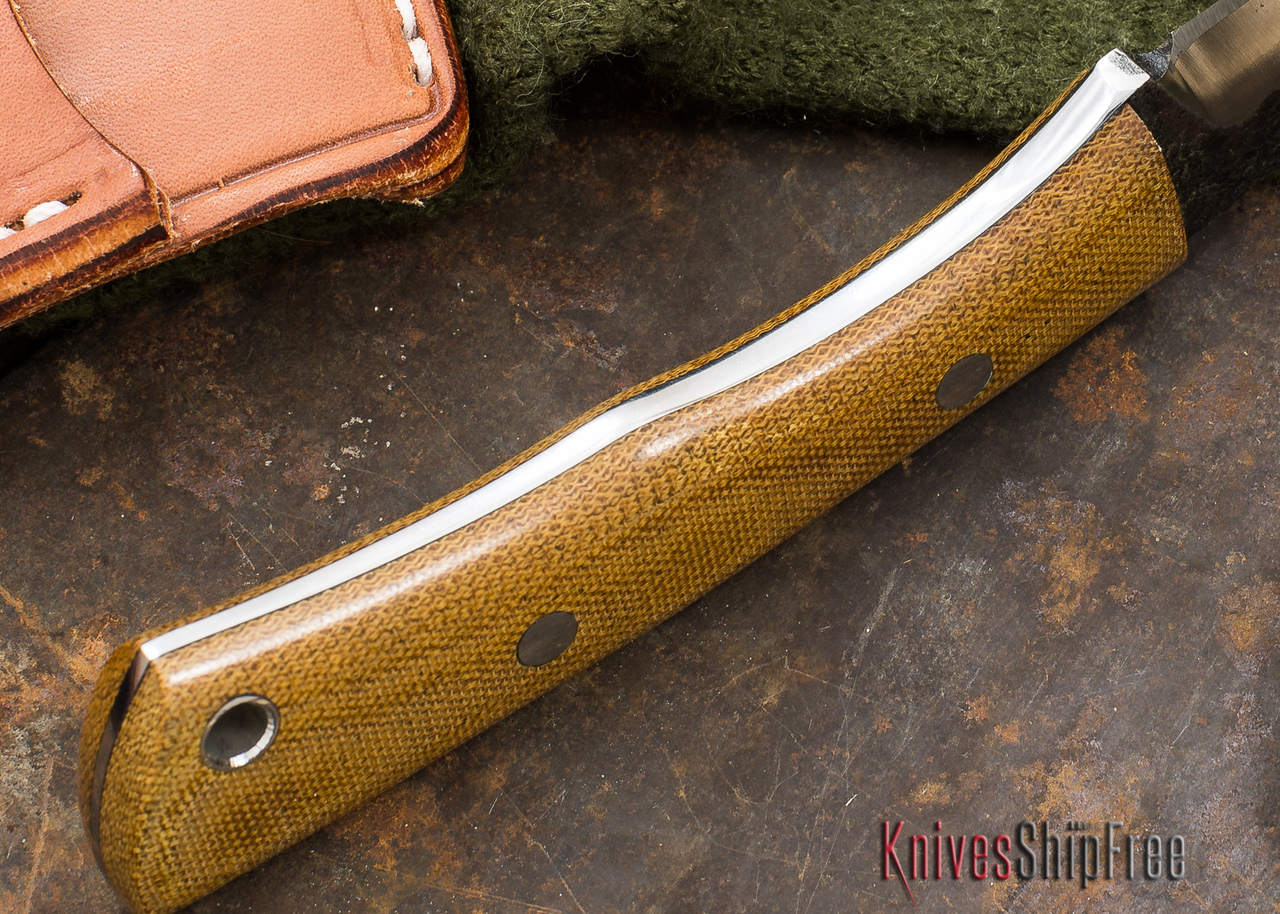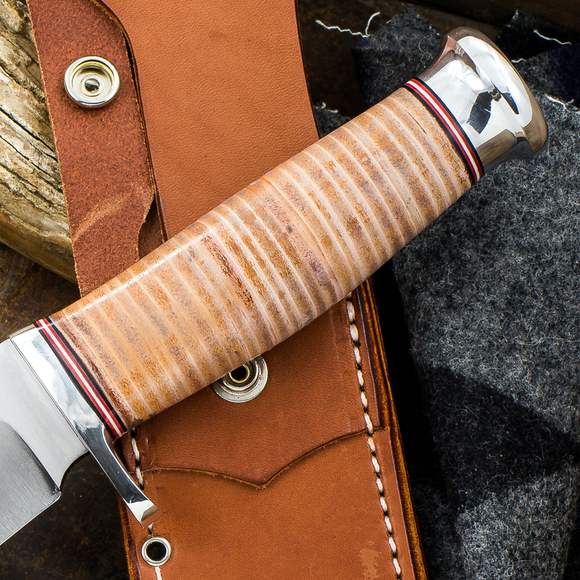FAQ: What's a 'tang'?
23rd Jun 2015
On a fixed-blade knife, the "tang" extends behind the blade -- it's essentially a continuation of the blade component, forming the foundation for the knife's handle.
A "full tang" is exactly what it sounds like it is -- the tang is the same profile as the handle, with the handle slabs affixed to its sides. On a full-tang knife, the steel of the tang is visible between the handle slabs.
The greatest advantage of a full tang is its strength. As you might expect, however, a full tang can increase weight at the handle end of a knife.

Knifemakers use a couple of different techniques to lighten a full tang and restore a knife's optimal balance. The first is to "skeletonize" the tang, lightening it by drilling or cutting voids that ultimately are hidden by the handle slabs. The other method is to achieve the same result by "tapering" the tang.
Properly done, and for all practical purposes, both skeletonized and tapered full tangs preserve the strength of a solid full tang.
A "partial tang" or "half tang," naturally, is similar, but it's shorter and doesn't extend through the knife's entire handle. It reduces handle weight, albeit at the expense of some strength.

Another popular type of tang found on fixed-blade knives is what's known as a "stick tang." It's much smaller in profile than the knife's handle and is completely hidden inside the handle material.
The end of a stick tang commonly is threaded to accept a decorative pommel cap, which (when tightened) serves to hold the handle material to the tang.
A stick tang is lightweight, of course, and it's visually appealing. It's often chosen for historical-tribute knives or to accommodate handle materials such as stag crowns and the like. While its ultimate strength can't approach that of a full tang, in real-world use -- and again, if it's done right -- a stick tang will hold up just fine.
Now, you might be wondering...do pocketknives and folding knives have tangs?
Yes -- they're much shorter, though, extending just far enough behind the blade to accommodate a hole for the pivot. The tang on a folding knife also incorporates cam surfaces (permitting the blade to move smoothly) and may include features that mate with a locking mechanism or springs.
One more thing -- have you ever heard the term, "tang stamp"? Knifemakers often leave their name or brand on the tang of a knife. That's not always the case these days, but the tang is traditionally the first place to look for a maker's mark.
